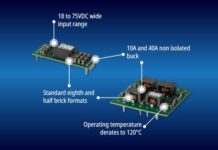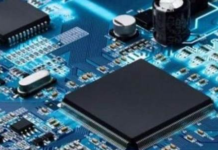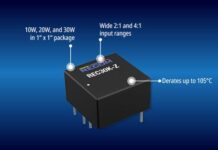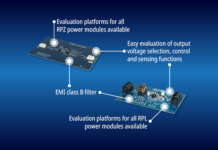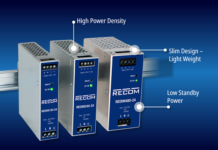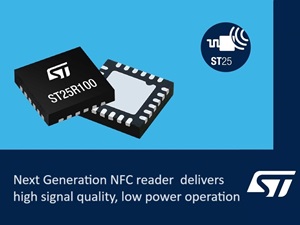
Introduction
Market conditions require motors to be more compact, energy-efficient, and controllable. These trends drive the need to deliver precise motor control into a compact packaging envelope to fit the breadth of applications for DC motors.
Brushless DC (BLDC) Motor Market and Trends
The brushless DC (BLDC) motor market is around $17B and projects to grow steadily at a CAGR of 13 percent[1]. The market comprises three primary segments: consumer, automotive, and industrial applications. Consumer applications like home appliances and kitchen tools are driving BLDC growth in the B2C market. Drivers for the automotive segment include the growing vehicle production volume, each averaging 40 motors per car as safety features increase. In addition, premium vehicles contain over 100 motors as next-generation luxury and electric vehicles incorporate increased driver-assist and infotainment features. Finally, the expansion of the IoT, smart factories, and electrification for industrial applications fuel BLDC growth in the industrial segment.
Several primary growth factors enable the high growth rate of BLDCs in these three markets: precise control of torque and power, low noise and EMC, and high efficiency in both energy and cost. The most important factor is maintaining high precision over torque and power in a small space with the downward pressure on form factors. Consumer and automotive applications are especially sensitive to noise, where motor proximity to the user can negatively impact the consumer experience. In industrial factories, excessive noise has a compounding negative effect that can compromise near-term operator safety and chronic hearing degradation.
In this blog, we will outline a solution to meet the demand for precise motor control in a compact form factor that can fit into the ever-increasing applications for brushless DC motors.
Motor Control Gate Drivers & MCP8021/2 Solution Highlights
A motor control gate driver is a power amplifier offering shoot-through protection while guarding against overcurrent and overvoltage. For BLDC, motor control gate drivers use a drive circuit to drive the motor electronically. This drive circuit opens and closes semiconductor circuits according to a prescribed sequence, generating a rotating magnetic force that turns the motor.
The Microchip Technology MCP8021 and MCP8022 are 3-phase BLDC motor gate drivers that integrate a 3.3V or 5.0V LDO regulator to supply power to the host and peripheral components, along with an overtemperature sensor. They also offer user-configurable functions:
- Dead time
- Blanking time
- Sleep mode enable/disable
- Overcurrent detection enable/disable
- Undervoltage detection enable/disable
Microchip’s 3-phase motor gate drivers provide numerous consumer benefits as well. As a fully integrated BLDC motor gate driver, integration is hassle-free. In addition, the components are already qualified to automotive grade 0 while containing the abundant protection and diagnostic functions the applications need.
The MCP8021/2 suite provides the small form factor dictated by the market movement and allows for rapid prototyping in evaluation and reference boards.
Applications for Motor Control Gate Drivers
Motor control gate drivers are a natural fit for consumer, automotive, and industrial applications.
Consumer Applications for Motor Control Gate Drivers
The first segment, consumer applications, includes sub-categories like home appliances, kitchen tools, or hobby uses such as aircraft, boat, or vehicle maintenance. A review of implementing the MCP8021/2 motor gate drivers in a vacuum cleaner is summarized below.
Application Review: High-Performance Vacuum Cleaner BLDC Motor Control with MCP8022
A reference design for a small vacuum cleaner employed the BLDC motor control gate drivers (Figure 1). With a 50mm diameter form factor and field oriented control (FOC) for high efficiency, the application is a perfect fit for the motor controller. The solution offered a 3-shunt motor phase current measurement and sensorless operation.
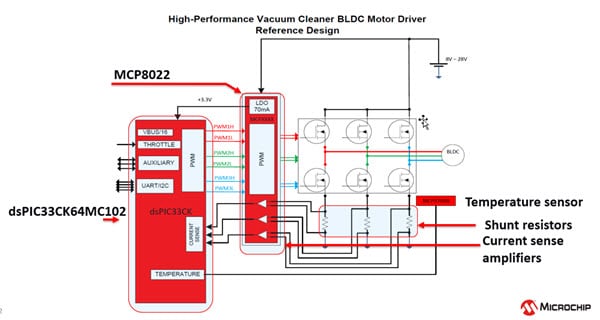
Figure 1: Reference design of the high-performance vacuum cleaner with the MCP8022 included. (Source: Microchip Technology)
In the vacuum application, input voltage ranged between 8-28V, with a maximum phase current of 17ARMS and 400W maximum power output (both continuous). PWM frequency ranged between 8-65kHz with a maximum duty cycle of 95 percent.
Figure 2 shows the top and bottom view of the system design and where the MCP8022 fits.
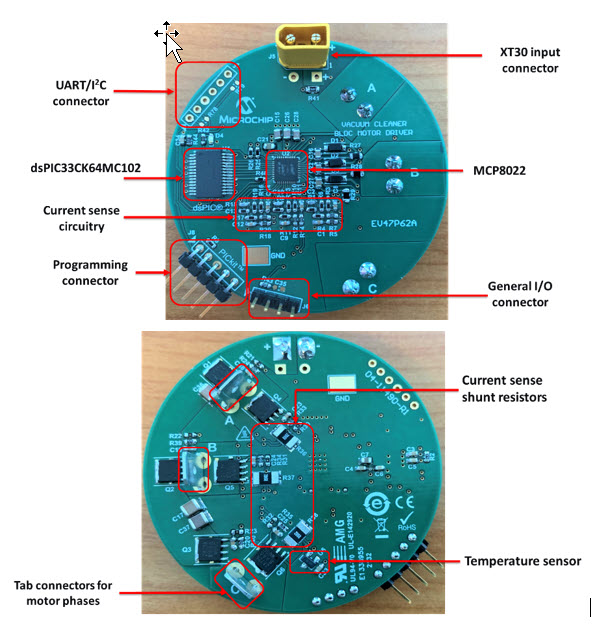
Figure 2: Top and bottom view (in order) of the vacuum design with the MCP8022 included. (Source: Microchip Technology)
Implementing the drivers optimized the vacuum BOM to minimize space and cost—primary advantages delivered by the MCP8021/2.
Automotive Applications for Motor Control Gate Drivers
Automotive uses include fuel, water, oil pumps, ventilation motors, window power, trunk release, and sunroof opening and closing.
Figure 3 illustrates the use cases for some of these motors; nearly all vehicle subsystems employ BLDCs.
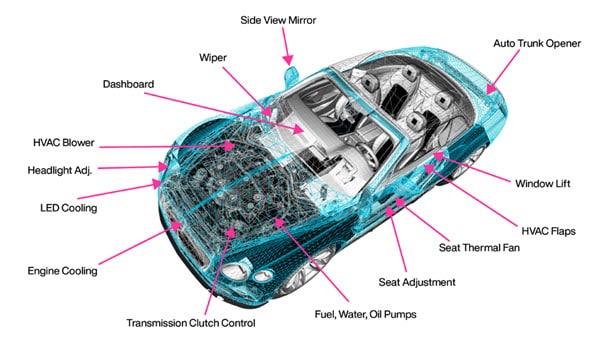
Figure 3: BLDC motors are used extensivley in a modern automobile applications including fuel, water, and oil pumps; ventilation system; window lifts; and trunk openers. (Source: Mouser Electronics)
Industrial Applications for Motor Control Gate Drivers
Industrial uses include automation, such as robotic welding machines, production equipment, or hands-free material or product movement through the plant. In addition, power tools, such as electric screwdrivers or bandsaws, can enjoy the higher efficiency of BLDC.
Conclusion
Many global macro-factors are propelling the BLDC to rapid growth, including electrification, increased automation, the IoT, and increased functionality in consumer-facing technology. But the motor is only as useful as its controller. Modern applications require efficient, precise motors, which in turn require modern control methods to deliver the market needs of decreased size and improved integration and efficiency. Motor control gate drivers like the Microchip MCP8021/2 provide flexibility alternatives that fit into various applications, simplifying the design process along the way.
Blog by: Mouser Electronics



